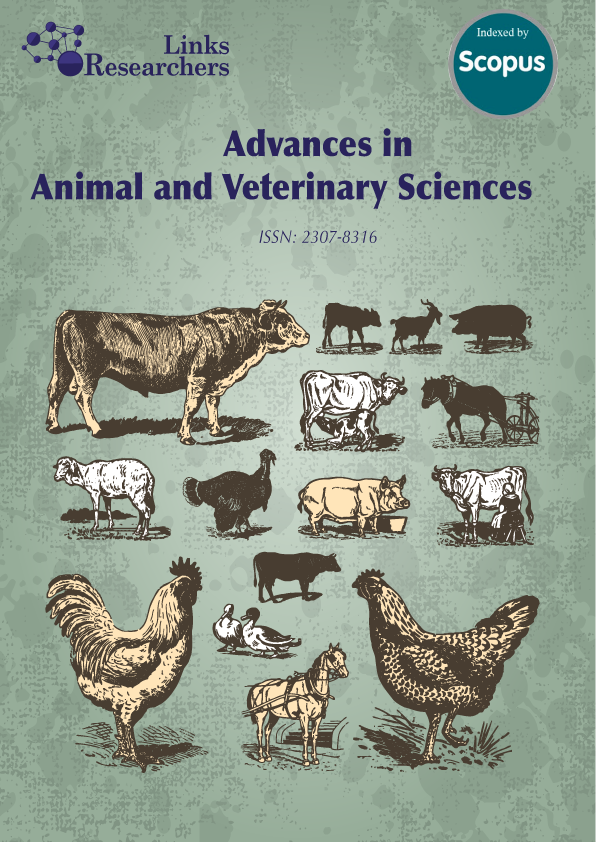Advances in Animal and Veterinary Sciences
Submit or Track your Manuscript LOG-IN

Featuring
-
Effect of Withania Somnifera Supplement on Thyroid Gland Hormones, Body Weight, Body Temperature and Thyroglobulin in Males Rabbits Induced with Hypothyroidism
Zainab Sadik Chetheer, Aseel Abdullah Ibraheem
Adv. Anim. Vet. Sci., Vol. 12, Iss. 12, pp. 2557-2563
-
Factors Related to Immunity after Rabies Vaccination in the Dog Population Raised in An Giang Province, Viet Nam
Nguyen Phi Bang, Nguyen Thi Hanh Chi, Ngo Thuy Bao Tran, Nguyen Thi Bich Hanh, Nguyen Ba Trung, Le Thi Thuy Hang
Adv. Anim. Vet. Sci., Vol. 12, Iss. 12, pp. 2549-2556
-
Hepatotoxicity Induced by the therapeutic dose of Chlorpromazine and Ameliorative for Saussurea Costus Roots Extract and Effect of Physiological and Histological Liver of Albino Rats
Nbaa Mutea Abid AL-Alh, Nuha Hatem Khalaf, Nagam Khudhair, Ahmed Khalid
Adv. Anim. Vet. Sci., Vol. 12, Iss. 12, pp. 2540-2548
-
Effect of Dietary Supplementation of Binahong Anredera Cordifolia (Ten.) Steenis Extract as a Feed Additive on the In Vitro Ruminal Fermentation
Heni Suryani, Sri Novianti, Fatati, Jul Andayani, Saitul Fakhri, Muhammad Ambar Islahudin
Adv. Anim. Vet. Sci., Vol. 12, Iss. 12, pp. 2531-2539
Subscribe Today
Receive free updates on new articles, opportunities and benefits

© 2024 ResearchersLinks. All rights Reserved. ResearchersLinks is a member of CrossRef, CrossMark, iThenticate.



